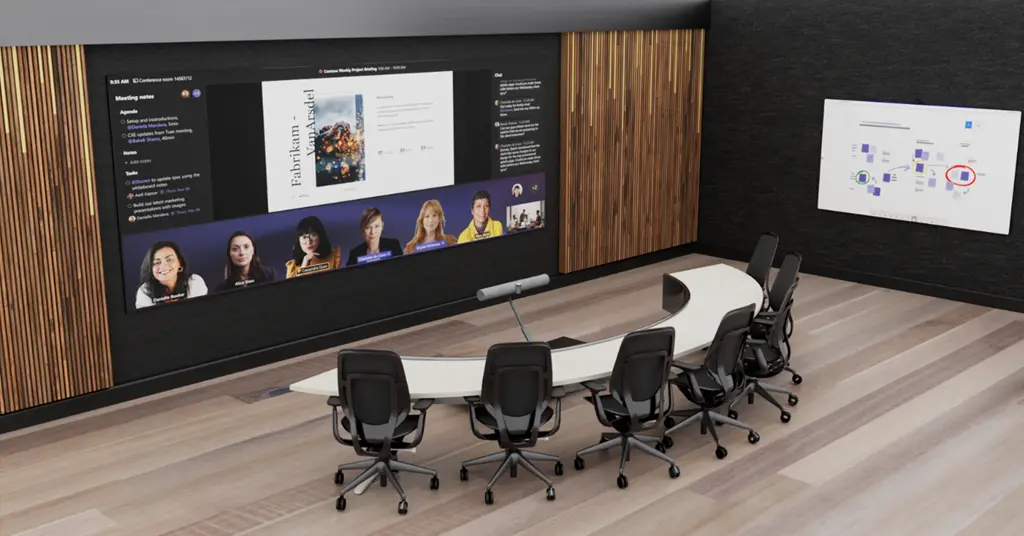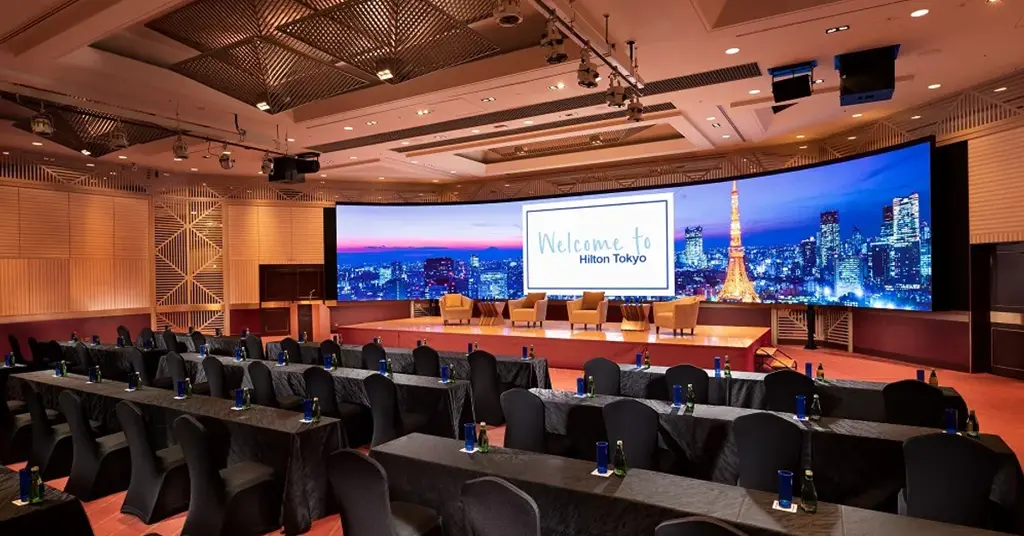Optimizing Conference Room Audio Visual Solution For Remote Participants
Remote conferences and virtual conferences are being accepted by more and more enterprises, and it is very important to optimize conference room audio-visual solutions for remote participants. But obviously this is full of challenges for ordinary people, because they lack professional expertise in conference room audio-visual solutions.
In order to better solve this problem, Galaxyav has compiled a comprehensive guide on how to optimize conference room audio-visual solutions for you in this article based on years of cases and experience. Galaxyav has many years of experience in the field of audio-visual system integration and LED screen equipment manufacturing. Our professional experience is worthy of your trust.
Table of Contents

Choose the right audio visual equipment
Visual equipment and system
Different audio-visual equipment will have a great impact on the audio-visual effects of remote meetings. Taking the display device as an example, the common conference chair display devices include LCD screen, laser projector and LED screen. These three conference room display devices will have a big difference in displaying images and video.
When there is no remote content sharing software, the images and video content of the local meeting room cannot be displayed on the computer screens of the remote meeting personnel. When using the conference room camera for remote viewing, the content displayed by the laser projector will become blurred and will be greatly affected by the external light conditions. In this case, we usually recommend you to use LED screen as the preferred display device in the conference room.
Audio equipment and system
Audio equipment is also an important part of conference room audio-visual solutions. High-quality microphones and speakers provide clear audio for remote participants. However, it is worth noting that some conference rooms will use surround sound speakers as the amplifying equipment of the conference room. These stereo audio devices will have a good audio effect when used in the local meeting room, and the remote participants will not feel these experiences at all. In some complicated cases, even the mutual interference of electromagnetic waves may cause the remote participants to be unable to hear the speeches of the people in the conference room.
Signal transmission and processing equipment
When multiple audio-visual equipment in the meeting room work at the same time, many sets of digital signals will be generated. These digital signals can be transmitted through cables or transmitted and exchanged through wireless transmission. In order to avoid mutual interference between signals of the same frequency, you need to choose a reliable high-power signal receiver and transmitter.
This relay-type signal processor can avoid network delays caused by signal weakening, display device screen freezes, and audio interruptions. At the same time, it can also allow remote participants to have a better experience of participating in the meeting, without worrying about meeting freezes and delays caused by signal interruption and interference.

Optimize meeting room infrastructure
After selecting the appropriate audio-visual equipment, we also recommend that you properly optimize the current meeting room so that remote participants can have a good meeting experience. Below are some common meeting room optimization projects.
Lighting optimization
Due to the limitation of floor height, building distance and external sunlight and light conditions, the natural light of the meeting room is difficult to meet the requirements of daily office and remote meetings, which prompts us to install enough lamps to generate enough light. We recommend that you purchase LED lamps as the main light source for your office and meeting rooms. When purchasing LED lamps, it is necessary to test their performance and avoid stroboscopic phenomena, otherwise the video images transmitted to remote participants through the camera will not be clear.
Camera Selection and Adjustment
Usually we recommend that you choose a wide-angle camera to transmit real-time conference room images. Although the single cost of a wide-angle camera is slightly higher than that of an ordinary camera, usually only one wide-angle camera is enough for a meeting room. The wide-angle camera can also set the shooting angle at will without installing multiple cameras in multiple corners of the meeting room. In addition, the staff can also adjust the focal length of the wide-angle camera as needed so that the remote participants can clearly see any picture in the meeting room.
Troubleshooting before remote video conferencing
Although we have upgraded the audio-visual equipment of the meeting room and optimized the infrastructure of the meeting room, it is inevitable that various problems will arise during use. In order to ensure the normal progress of the teleconference, we need to troubleshoot possible influencing factors in advance and conduct regular maintenance before starting the teleconference. Including whether the power supply equipment and power lines are normal, whether there are dead pixels and black screens on the display screen, whether the channel of the data signal repeater is unblocked, etc.
Conclusion
Optimizing audio-visual solutions for remote conference rooms is full of challenges for ordinary people. This guide provides relevant references for you to choose appropriate audio-visual hardware equipment and optimize conference room infrastructure. As a professional conference room audio-visual solution provider for more than 20 years, we have a professional technical team to provide you with free technical support and project consulting services. If you have any meeting room audio-visual solution needs, welcome to contact us.
Want to know more about the Audio Visual Solutions?
